Related Research Articles

Hoverflies, also called flower flies or syrphids, make up the insect family Syrphidae. As their common name suggests, they are often seen hovering or nectaring at flowers; the adults of many species feed mainly on nectar and pollen, while the larvae (maggots) eat a wide range of foods. In some species, the larvae are saprotrophs, specifically detritivores, eating decaying plant and animal matter in the soil or in ponds and streams. In other species, the larvae are insectivores, preying on aphids, thrips, and other plant-sucking insects.

Paragus is a genus of hoverflies.

Platycheirus clypeatus is a species of hoverfly. It is found across the Palearctic and in the Nearctic. The larvae feed on aphids. Adults are usually found on the edges of woodland or scrub, heath or along hedgerows where they visit a wide range of flowers.

Platycheirus peltatus is a Palearctic species of hoverfly.

Leucozona lucorum is a Palearctic and Nearctic species of hoverfly.
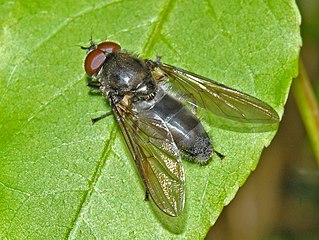
Cheilosia variabilis, common name figwort cheilosia, is a species of hoverfly belonging to the family Syrphidae.

Sericomyia lappona, is a species of hoverfly. It is widespread throughout the Palearctic.

Epistrophe grossulariae is a Holarctic species of hoverfly.
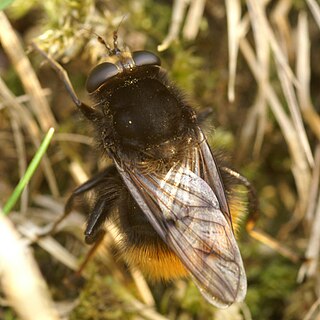
Criorhina ranunculi, is a species of hoverfly found in the spring in many parts of Britain and Europe.
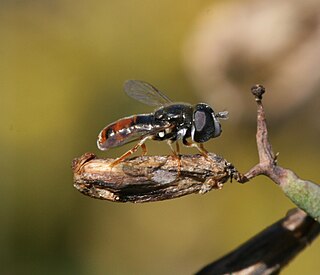
Paragus tibialis, is a species of hoverfly found in many parts of Europe and North Africa. It has a preference for drier areas and its larvae feed on root aphids.

Paragus haemorrhous, the Black-backed Grass Skimmer is a common widespread species of hoverfly found in many parts of Europe, Africa and the Nearctic. Hoverflies can remain nearly motionless in flight. The adults are also known as flower flies for they are commonly found on flowers from which they get both energy-giving nectar and protein-rich pollen. The larvae are predators on aphids.

Paragus albifrons, is a species of hoverfly. It is found from southern Europe across to eastern Asia.

Melangyna umbellatarum is a Holarctic species of hoverfly.

Sphegina sibirica is a species of hoverfly.

Brachypalpus valgus is a species of hoverfly found in Europe.

Xylota abiens is a European species of hoverfly.
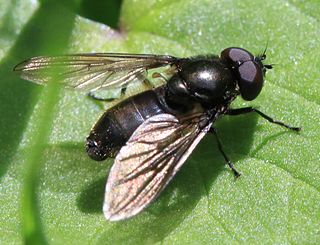
Cheilosia pubera is a Palearctic hoverfly.
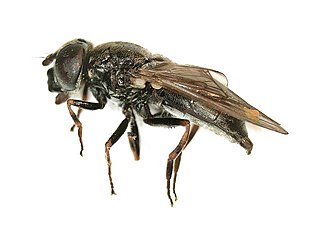
Cheilosia cynocephala is a Palearctic species of hoverfly.
Cheilosia nigripes is a Palearctic hoverfly.
References
- ↑ Simic, S. (1986) Paragus constrictus sp.n. and other related species of the genus Paragus Latreille, 1804 (Diptera: Syrphidae) in Yugoslavia. Acta entomol.Yugosl., 22: 5-10.
- ↑ Stubbs, Alan E.; Falk, Steven J (1983). British Hoverflies: An Illustrated Identification Guide (2nd ed.). London: British Entomological and Natural History Society. pp. 253, xvpp. ISBN 1-899935-03-7.
- ↑ Ball, S.G.; Morris, R.K.A. (2000). Provisional atlas of British hoverflies (Diptera, Syrphidae). Monks Wood, UK: Biological Record Centre. pp. 167 pages. ISBN 1-870393-54-6.
- ↑ Van Veen, M.P. (2004). Hoverflies of Northwest Europe, Identification Keys to the Syrphidae (Hardback). Utrecht: KNNV Publishing. p. 254. ISBN 90-5011-199-8.
- ↑ Speight, M.C.D. (2011). "Species accounts of European Syrphidae (Diptera)" (PDF). Syrph the Net, the database of European Syrphidae. 65: 285pp.